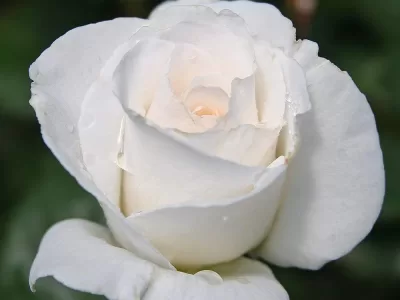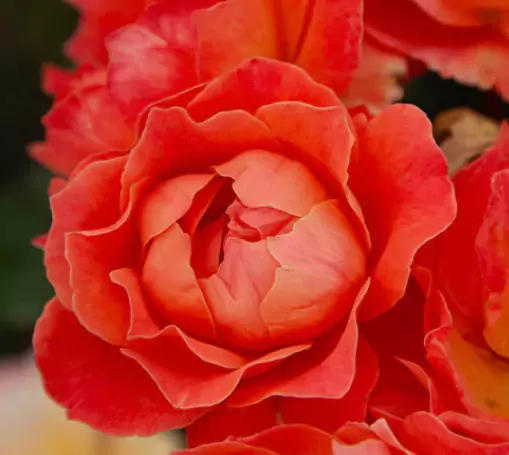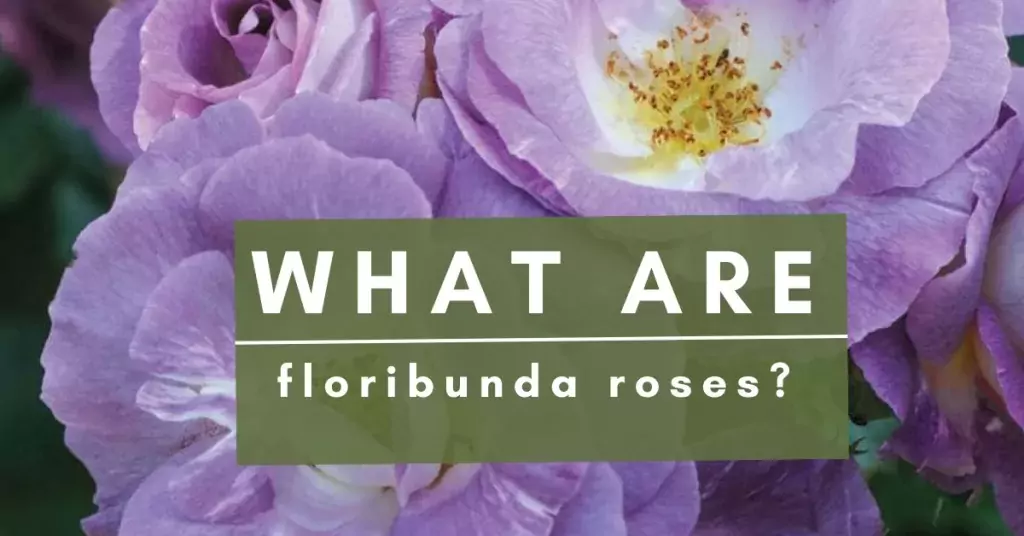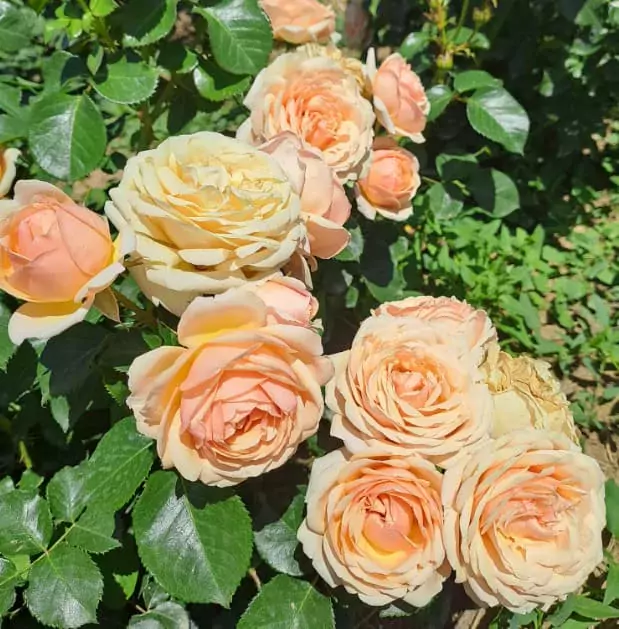In the vibrant tapestry of the botanical world, floribunda roses stand out as a testament to nature’s artistry. Appreciated for their abundant blossoms and alluring charm, these captivating flowers have enamored garden enthusiasts and florists.
The Origins of Floribunda Roses:
Floribunda roses trace their roots back to the early 20th century when hybridizers sought to create a rose that combined the elegance of hybrid tea roses with the profusion of blooms seen in polyantha roses. The result was the birth of floribunda roses, a delightful fusion of beauty and abundance. The first official floribunda rose, ‘Gruss an Aachen,’ was introduced in 1909 by German rose breeder Peter Lambert, marking the beginning of a new era in rose cultivation.
A rose is classified as a floribunda if it has the following characteristics:
- Abundant blooms:
Floribundas are known for their prolific flowering, producing clusters of blooms rather than single flowers on each stem. These clusters can contain anywhere from 3 to 20 blooms, creating a stunning mass of color and fragrance.
- Hybrid origins
cross the large, single-flowered hybrid tea roses and the more miniature, densely flowered polyantha roses. This combination combines the beauty and variety of hybrid tea roses with polyanthas’ profuse blooming and disease resistance.
- Compact growth:
While not miniature, floribundas tend to be bushier and more compact than hybrid tea roses, typically reaching 3-6 feet. This makes them ideal for borders, hedges, and smaller gardens.
- Long blooming season:
Floribundas boasts a prolonged blooming period, often lasting from early summer until the first frost in fall. With proper care, some varieties can even rebloom throughout the season.
Compared to hybrid tea roses, floribundas generally resist common rose diseases like black spots and powdery mildew. This makes them easier to care for and suitable for beginner gardeners.
What does "floribunda" mean?
The word “floribunda” is derived from Latin, where “floris” means “flower” and “abundus” means “abundant.” So, floribunda translates to “abundant flower,” perfectly capturing the defining characteristic of these remarkable roses.

What is the difference between a shrub rose and a floribunda rose?
Both shrub roses and floribunda roses are beautiful and popular choices for gardens, but they do have some key differences. Here’s a breakdown to help you decide which is suitable for you:
Bloom Abundance:
Floribundas: As their name suggests (“floribunda” means “many flowers” in Latin), floribundas are all about abundant blooms. They produce clusters of 3-20 flowers on each stem, creating a stunning mass of color and fragrance.
Shrub roses: While still free-flowering, shrub roses typically have fewer blooms per cluster, usually 1-3. However, they often come in various flower shapes and sizes, from delicate singles to double pompoms.
Growth Habit:
Floribundas: Generally have a compact and bushy growth habit, reaching a height of 3-6 feet. This makes them ideal for borders, hedges, and smaller gardens.
Shrub roses come in various sizes and shapes, from low-growing groundcovers to tall climbers. They can be used as specimens in mixed borders or trained to climb trellises and fences.
Bloom Season:
Floribundas: Boast is a prolonged blooming period, often lasting from early summer until the first frost in fall. Some varieties even rebloom throughout the season.
Shrub roses Also have a long blooming season, which can vary depending on the array. Some shrub roses bloom continuously throughout the summer, while others have flushes of bloom in spring and fall.
Disease Resistance:
Floribundas: Generally have more excellent resistance to common rose diseases like black spots and powdery mildew, making them easier to care for.
Shrub roses: Can vary in their disease resistance, but some varieties are known for being particularly tough and low-maintenance.
A floribunda is an excellent choice if you’re looking for a rose that produces a mass of blooms and is relatively easy to care for.
If you prefer a wider variety of flower shapes and sizes or want a rose that can be used in different ways in your garden, a shrub might be a better option.

Get Your Free Lunar Gardener's Calendar 2025!
Join the Lunar Gardening Revolution! Subscribe now to receive our exclusive Free Lunar Gardener’s Calendar for 2025. Harness the power of the moon to optimize your planting, nurturing, and harvesting.
What is the difference between a floribunda and a grandiflora rose?
Floribundas and grandifloras are stunning rose varieties but have some key differences. Here’s a breakdown to help you choose which one might be right for your garden:
Bloom Abundance and Size:
- Floribunda: True to their name (“floribunda” means “abundant flower” in Latin), floribundas boast clusters of small to medium-sized blooms (3-20 per stem). This creates a mass of color and fragrance.
- Grandiflora: While still free-flowering, grandifloras typically produce single, more prominent blooms (5-6 petals) on longer stems. They offer a more elegant, refined look.
Growth Habit:
- Floribunda: Have a compact and bushy growth habit, reaching a height of 3-6 feet. This makes them ideal for borders, hedges, and smaller gardens.
- Grandiflora: Generally taller and sturdier than floribundas, reaching 6 feet or more. They can be used as specimens in more extensive gardens or as focal points in mixed beds.
Disease Resistance:
- Floribunda: Usually have higher resistance to common rose diseases like black spots and powdery mildew. This makes them easier to care for, especially for beginner gardeners.
- Grandiflora Can vary in their disease resistance, but some varieties are known for being relatively trouble-free. However, they might require slightly more attention than floribundas.

Blooming Season:
- Floribunda: Enjoy a long blooming season, often lasting from early summer until the first frost. Some varieties even rebloom throughout the season.
- Grandiflora: It also has a long blooming season, but it may be slightly shorter than floribundas, with fewer reblooms depending on the variety.
Choosing the Right Rose:
- A floribunda is an excellent choice if you want a rose that produces a massive display of colorful blooms and is relatively low-maintenance.
- If you prefer larger, elegant blooms and have more space in your garden, a grandiflora is a better option.
Ultimately, the best rose for you will depend on your preferences, garden size, and desired level of care. Consider these factors and choose the variety that you love!
FAQ Section:
Absolutely! Floribunda roses are celebrated for their recurring bursts of blooms. From the initial signs of spring to the fiery finale of fall, these floral powerhouses release an unending shower of blossoms, transforming your garden into a canvas of vibrant hues.
Indeed, you can! Floribunda roses are cherished for their prolonged blooming season. These beauties adorn your garden with clusters of color, starting from late spring and extending through summer, often lingering into the fall. Their reliable and abundant flowering makes them a preferred choice for those pursuing continual floral opulence.
The presence of thorns varies among rose varieties, and many floribunda roses do indeed sport thorns. The size and sharpness of these thorns depend on the specific cultivar.
Floribunda roses present an enchanting array of fragrances. While the scent may differ between cultivars, numerous floribunda roses are recognized for their sweet and delightful aromas.
Many floribunda roses showcase outstanding disease resistance. Admired by rose enthusiasts for their ability to withstand common rose ailments like black spots and powdery mildew, these roses exhibit resilience that contributes to their overall health. This quality makes them a practical and low-maintenance choice for gardeners.


